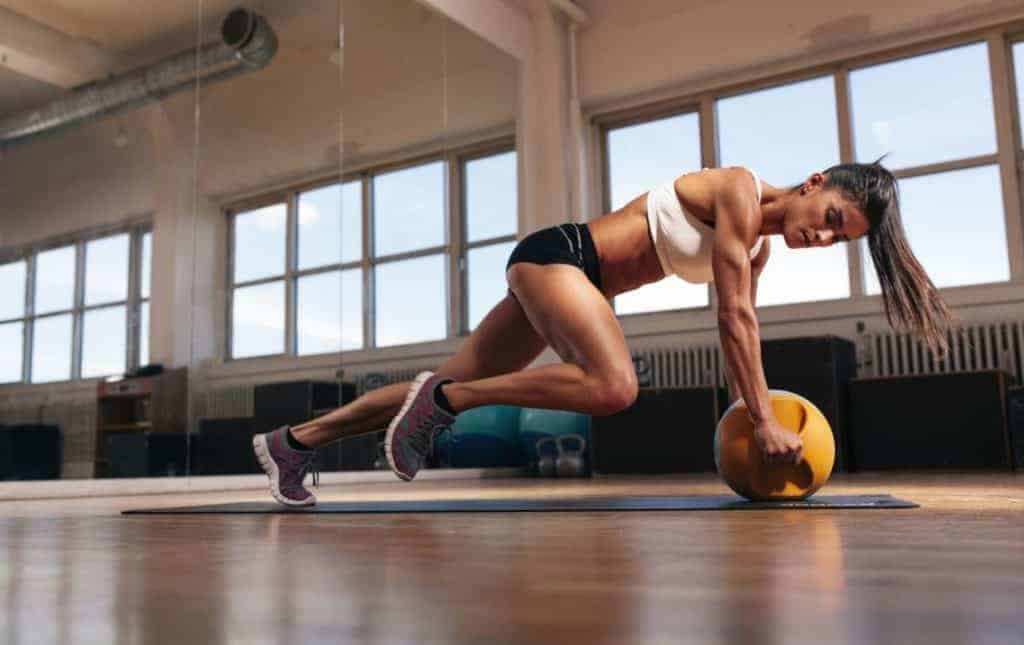Are you tired of spending hours at the gym, hoping for quick results? Well, say hello to HIIT training: Great Results in a Short Time!
This high-intensity workout method is like a superhero, delivering amazing results in record time. With HIIT, you can kiss long hours on the treadmill goodbye and still achieve your fitness goals. In this article, we’ll dive into the world of HIIT training and why it’s the secret weapon for time-strapped individuals who want to get fit.
So, if you’re ready to sweat it out and see incredible changes in your body, keep reading! Short answer: HIIT training delivers great results in a short time.
Key Takeaways
- HIIT training delivers great results in a short time.
- It involves intense exercise followed by brief recovery periods.
- HIIT boosts metabolism, burns calories, and improves cardiovascular health.
- It can be done with various exercises like running, cycling, or bodyweight exercises.
- Maintain proper form and gradually increase intensity.
- Consult a fitness professional for a personalized HIIT plan.
What is HIIT training?
HIIT training (high-intensity interval training) is defined as performing short sessions (between 4 and 20 minutes) with series of between 20 seconds and 4 minutes of HIIT exercises (high intensity, not maximum), interspersed with recovery periods of low intensity.
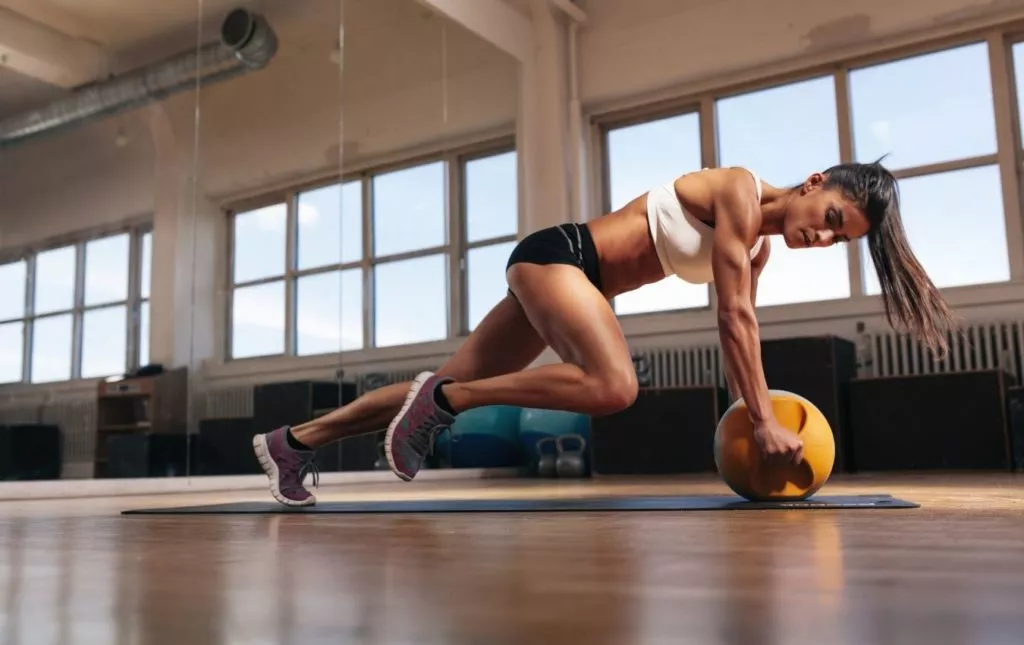
Intensity intervals are short because the body cannot maintain the optimal activity level for HIIT for long.
Today, HIIT routines have earned the reputation of being the most effective workouts, both for people who want to burn calories and for athletes looking for greater performance.
But not every short session can be considered HIIT.
This type of training requires a special mental attitude.
You have to be willing to give it your all and take on a high degree of fatigue in a very short time, and this attitude and mental toughness, like any other ability, has to be trained.
The first time you do a HIIT routine, the feeling of fatigue will hit you long before your body is exhausted.
This is normal and will lead to a very rapid progression in the first few days of training. Even if the body is not stronger, your mind will tolerate intensity better.
To optimize training, it is advisable to do exercises that mobilize many muscle chains and require high energy consumption. They are what we will call HIIT exercises.
For example, playing golf is not a HIIT exercise.
Of the HIIT training sessions, the most famous is the TABATA. This session lasts only 4 minutes. If you are interested in knowing more about this session, we recommend you read this article.
Why is HIIT training so effective?
To understand why HIIT training is so effective, we have to get a little technical:
We usually use aerobic respiration for energy.
This means that we use oxygen to “burn” our body’s glucose or fat for energy. This is a very efficient method, but it limits the intensity at which we can work.
When we train at a high intensity, we use two sources of energy.
During the first moments of physical activity, our cells use the energy they have available in ATP and phosphocreatine. It is a fast and explosive energy, but we have little stored ATP, and after 20 seconds, it runs out.
We save little because it takes up a lot.
The weight in ATP molecules needed to run a marathon is 70kg!
When the ATP runs out, the body tries to get enough oxygen to the muscle to generate the necessary energy. Increase the respiratory rate. The pulse quickens, and we begin to breathe very heavily.
But our heart has a limit, and there is a time when the oxygen does not reach the cells fast enough to generate all the required energy.
Then our metabolism switches to anaerobic glycolysis, in which glucose is “burned” without oxygen.
This is a less efficient but much faster way to generate power.
The problem with anaerobic respiration is that it only uses glucose for energy, and our body does not have too many reserves of it.
An elite athlete can maintain a high-intensity pace with maximum pure anaerobic respiration of 10 minutes.
Recapitulating: we have two complementary systems: aerobic respiration, efficient but allows us to work at low intensity, and anaerobic respiration, which gives us quick energy but is quickly exhausted.
HIIT training allows us to combine aerobic & anaerobic respiration.
Alternating cycles of high intensity and rest, we optimize our energy management with periods of ATP consumption and anaerobic respiration with aerobic recovery periods.
This allows us to maintain higher activity levels for longer.
To improve physically, we have to push the body to the limit, break down many muscle microfibers, and generate a recovery and overcompensation response.
HIITs allow you to go further than regular training.
Besides, HIITs activate hormones that are not generated in lower-intensity workouts.
When you go above 85% of your maximum capacity, your body begins to generate testosterone, growth hormone, endorphins, adrenaline, norepinephrine, and cortisol.
In short, HIIT training stresses the body so much that it is forced to adapt.
Advantages of HIIT training
1) It speeds up your metabolism: If HIIT training is complemented with a proper diet, it speeds up caloric expenditure and metabolism.
The metabolic acceleration can mean burning many more calories not only during exercise but once it is over: it is estimated that you can burn up to 15% more calories in the 48 hours after performing HIIT!!
This is called EPOC (“excess post-workout energy intake”).
If you want to know more about this effect, check out our article on how to burn fat with the afterburn effect.
2) It is an ally of our cardiovascular health: Continuing with the previous point, this increase in metabolic rate and the burning of calories not only shapes our image but also provides innumerable advantages to our cardiovascular health.

Specifically, HIIT training lowers blood pressure, increases cardiovascular health, and helps lower cholesterol.
3) Increase your muscles: To improve the muscle proportion, you need to generate a stimulus that indicates to the body that we lack muscles.
As this study shows us, the intensity is one of the critical factors in this regard.
4) Improve your sugar management: HIIT training makes your muscle much more efficient at capturing sugar, which is why it is considered both a preventive intervention and a treatment for type 2 diabetes. You can go deeper into this in this article.
But like everything in life, not everything is advantageous!
There is no perfect workout, and HIIT routines are not perfect, either.
We are going to see what are the main risks and mistakes made in this training.
Risks of HIIT training
1) You are not training at enough intensity: As we have already mentioned, you need to bring the body close to its limit to perform HIIT training.
Achieving this intensity level is not easy. It requires training and being able to tolerate a sensation of extreme fatigue.

It is very common to perform HIIT workouts below the necessary intensity. In these cases, the expected results will not be achieved, and this can lead to frustration.
The solution is simple: Don’t be fooled.
Decide if you want to focus on getting results accepting the discomfort of training at high intensity. You prefer to have pleasant sensations without suffering much but without improving much either.
2) High risk of injury: HIIT routines, although very short, have a high impact on our body.
If you do them without being physically prepared, you will have a high risk of injury.
In addition, it is very easy to abuse them.
Your body’s recovery is much slower than what it takes to catch your breath. Your body needs to recover on a chemical level, and this can take up to 48 hours, depending on the intensity of the session.
So while it’s very tempting to train for just 20 minutes a day every weekday, the reality is that 3 HIIT routines a week is enough.
In the case of overtraining, the dreaded injuries will appear.
The most common is in the soft tissues of the joints:
- Ligaments
- Tendons
- The muscles around the joints
- In the long term, you can damage the joint itself.
To avoid injury, it is essential to incorporate breaks into your training.
Alternate days of HIIT training with days of active rest, for example, with a light run.
To avoid injury, anti-inflammatory nutrition is also essential and helps tissue regeneration. I recommend that you follow the Paleo Diet. A very efficient diet for high-intensity training.
3) It is not good training for your body to adapt to endurance sports: HIIT training is not ideal for running a marathon if you do not combine it with lower intensity sessions.
HIIT training sessions, despite being so short, have been shown to impact metabolic endurance levels.
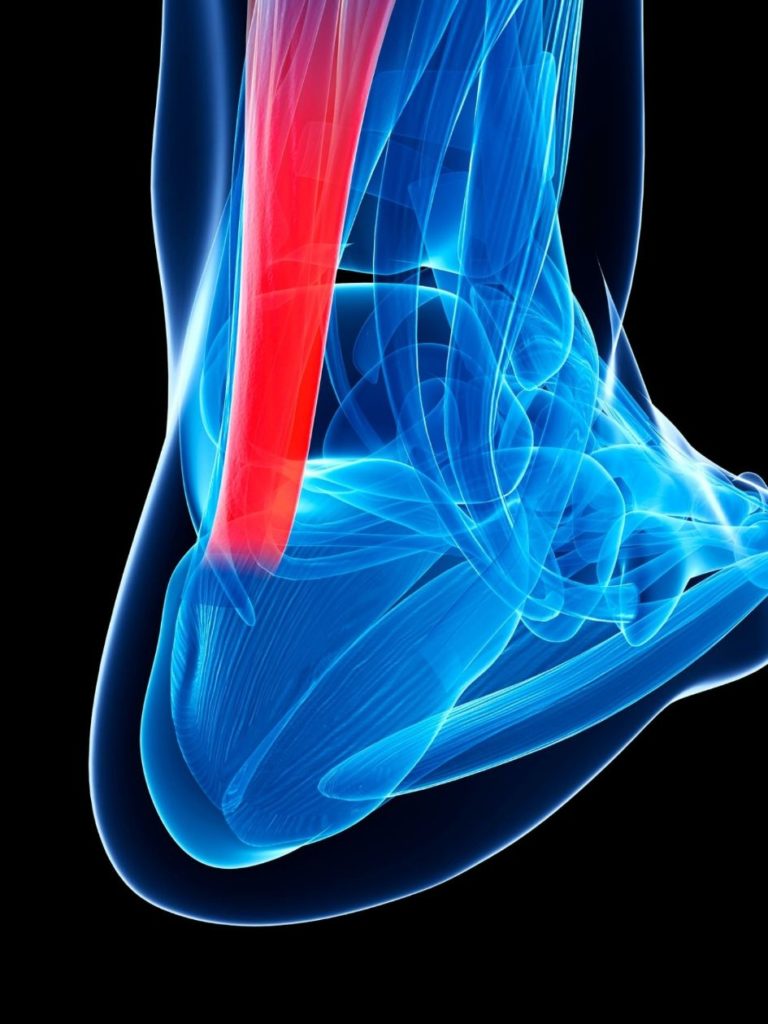
But the same is not true for muscles and tendons!
To run a marathon, your muscles, tendons, and joints must adapt to the impact of running, for example, for 3 or 4 hours straight.
In any case, HIIT routines are an excellent complement to increase the pace since the anaerobic and aerobic threshold is raised, but it cannot replace long sessions.
How can I start training with HIITs?
Starting to do HIIT workouts is easy and recommended for all healthy and moderately fit people.
However, you have to be careful if this is not your case: if you have not performed physical exercises for a long time or have never been used to exercise or sports routines, doing HIIT may not be right for you.
Performing such an intense exercise without preparation can generate unpleasant sensations that make you quit.
The sensations in physical activity are one of the most critical factors to generate adherence in sport.
If you train and enjoy, you will train more. If you don’t have a good time, you are likely to quit.
Watch this video to learn more about how to get in the habit of training.
If you are starting, we recommend focusing on moderate-intensity exercises and gradually incorporating more intense exercises.
When marking your HIIT routine, it is essential to take into account the periodicity of the exercises.
I recommend you train 3 times a week on alternate days. Think that this type of training benefits are sustained in generating great stress to the body. That prompts it to improve, but it can be an over-strain for the joints, muscles, and the central nervous system if you abuse it.
As always, it all depends: it is not the same as an athlete accustomed to the demand than a sedentary person, so be guided by your bodily sensations and see from less to more.
I am already an expert. How can I optimize my HIIT training?
Once we control this type of training, there are some recommendations to achieve better results.
1) Vary the intervals: 20 seconds of activity and 10 rest are not the same as 1 minute of activity and 15 seconds rest. The greater the variability, the less adaptation to the effort, and the more long-term benefits.
2) Watch the intensity: HIIT workouts are done at full throttle all the time and tighten at the end if they don’t lose their effects.
You should always end this session with the feeling that you couldn’t have pushed anymore.
3) Choose your exercises well: If you do exercise sequences, use them to increase variability further.
Combine days when all exercises are from the same muscle group, days for different muscle groups, and days that add global exercises that demand a lot from the cardiovascular system.
4) Eat well. A large part of the results you will get comes from your nutritional plan. If your diet is optimal, your beta-oxidation of fats will be useful, and your anabolic (muscle-building) state will be too. If your goal is to gain muscle strength, I suggest you review my guide to create your diet to gain muscle mass.
5) Rest: Rest is part of the training. When you train, you destroy muscle. When you rest, you build.
If you do not allocate quality time to rest, your results will likely stagnate.
The best HIIT exercises to start with
For an exercise to be suitable for HIIT, it has to bring you close to your failure threshold.
In many cases, this only depends on the intensity you put into the execution, but there is a compromise between intensity/speed and correct technical execution.
There are exercises in which, by their very nature, it is difficult to apply enough intensity. For example, the Strides: the execution time itself makes it difficult to put enough intensity without compromising good technique.
Here are some exercises that will quickly bring your body to the intensity levels required in a HIIT training routine.
Global HIIT Exercises
Climber: This exercise is simple to perform, but you will be surprised how fast it makes you raise your heart rate. It is ideal for training lactate resistance.
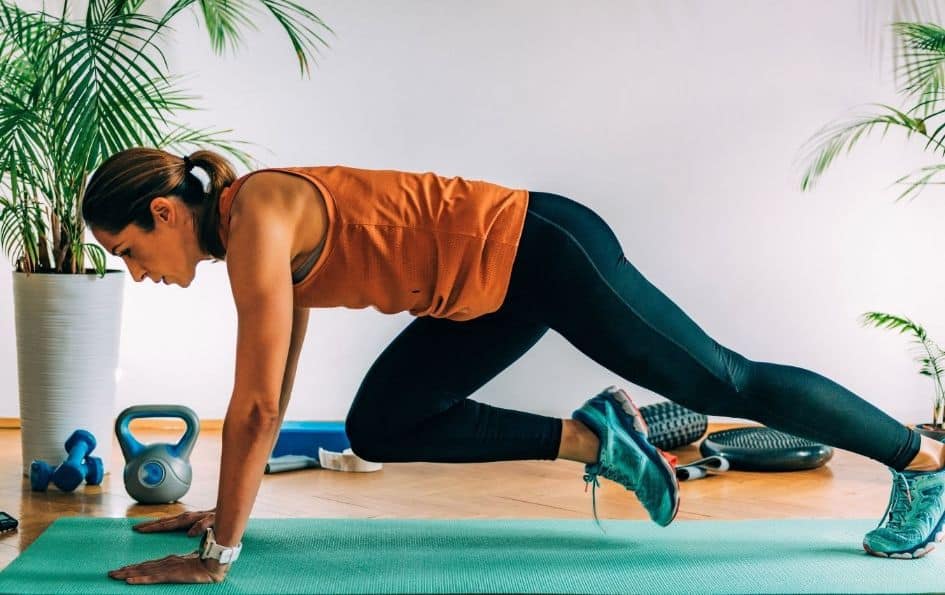
Double climber: Harder version of the previous exercise.
Burpee: The global exercise par excellence. You will activate all the muscle chains, and you will reach the limit very quickly. The easy version is the semi burpee.
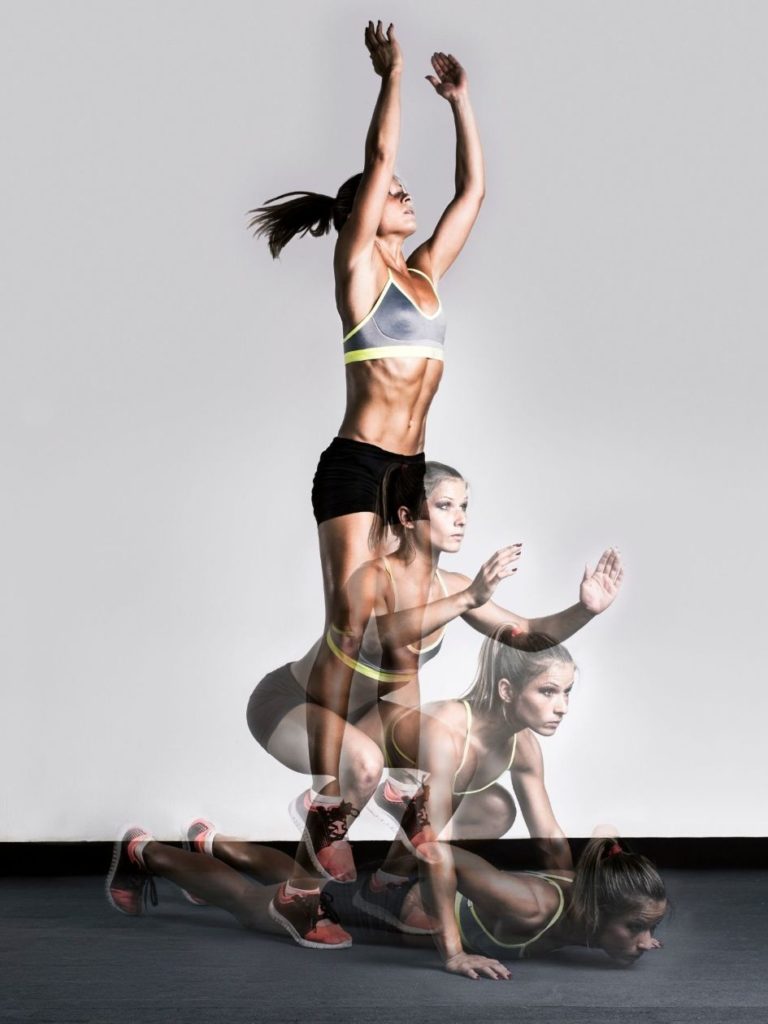
Star jump: Combine a jump with an arm extension. You will improve your posture!
Burrol: Global exercise opposite to Burpee. It performs intense work on the abs and requires good hip mobility.
HIIT Lower Body Exercises
Jump Stride: Intense version of the Stride. Incorporating a jump dramatically increases the intensity. It is essential to maintain good technique, especially in the kneeling position, to avoid injuries.
Jump Squat: Intense version of the Squat. It is important to do the full length of the Squat. The jump does not have to be very high; just taking your feet off the ground is enough.
Box jump: If you have a stable surface to jump on and have no neighbors to disturb, this exercise will allow you to perform very powerful leg work. Be careful at the reception to avoid loading your knees.
HIIT Upper Body Exercises
Push-ups: Classic among classics. This exercise will take you to the muscular limit of your upper trunk.
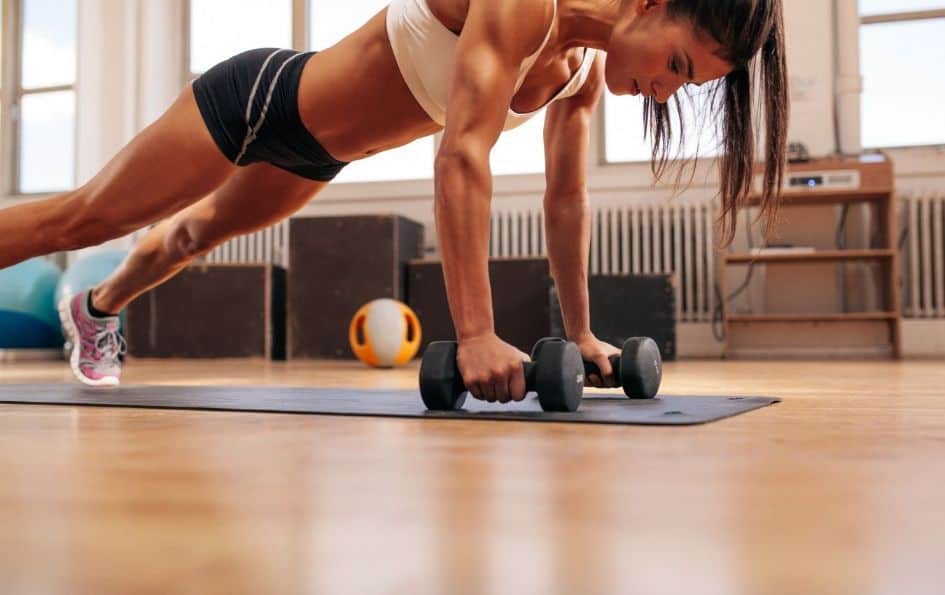
Hindu push-up: Harder version of regular push-ups. They add excellent mobility work to your shoulders.
Dominada: Another of the basic exercises to master. It is challenging, and if you are not in good shape, it will be difficult for you to do a single repetition. In these cases, use rubber bands or support for the feet to reduce the intensity.
HIIT Core exercises
Plank: This is the essential exercise to work your abs. It may be that it will soon fall short by not requiring movement in its execution. If this is the case, go to the next exercise.

Spider Iron: Did you want an iron that takes you to the limit? You need to incorporate a knee bend, and you have it.
V-Crunches: Very hard abdominal exercise. Only suitable for trained athletes. It is imperative to maintain good technique to avoid injury to the lower back.
As a general recommendation, we suggest that you always perform functional exercises.
Next, we propose two guided HIIT sessions. The first is to start, and the second is an advanced level.
Maximizing the Benefits of HIIT Training
HIIT (High-Intensity Interval Training) has revolutionized the fitness landscape, offering powerful results in condensed time frames. This dynamic approach to fitness is a fusion of intensity and interval, where short bursts of high-energy exercises are coupled with brief periods of rest. The methodology is scientifically designed to optimize calorie burn, enhance cardiovascular health, and improve metabolic function, ensuring that the body continues to burn calories long after the workout has concluded.
Crafting the Perfect HIIT Routine
A successful HIIT routine is not merely about the selection of exercises but also about their strategic sequencing and execution. It’s essential to incorporate a variety of exercises that target different muscle groups, promoting holistic improvement and preventing the overexertion of any single muscle group. Exercises should be chosen and sequenced to push the body to its limits, ensuring that each session is both challenging and effective.
Ensuring Safe and Effective HIIT Practices
While HIIT is a powerful tool in achieving fitness goals, it’s crucial to approach it with a mindset of safety and sustainability. Proper warm-up and cool-down phases are essential to prepare the body for the intensity of the workout and to facilitate recovery afterward. Additionally, maintaining correct exercise form and technique is crucial to prevent injuries and ensure that the exercises are as effective as possible.
Tailoring HIIT to Individual Fitness Levels
HIIT is adaptable, allowing it to be tailored to meet individual fitness levels and goals. For those new to HIIT, starting with moderate intensity and gradually increasing it as endurance and strength improve is advisable. For seasoned fitness enthusiasts, HIIT routines can be intensified by incorporating more challenging exercises, reducing rest intervals, or increasing the duration of the workout sessions.
The Transformative Impact of Consistent HIIT
Consistency in HIIT practices can lead to transformative fitness results, improving cardiovascular health, muscular strength, and overall endurance. When paired with a balanced diet and adequate rest, HIIT can be a cornerstone in a comprehensive fitness strategy, promoting not just physical well-being but also enhancing mental resilience and focus.
FAQs
What is HIIT training? HIIT stands for High-Intensity Interval Training. It is a form of exercise that involves short bursts of intense activity followed by brief periods of rest.
How long should a HIIT workout be? A typical HIIT workout can vary in duration, but it is generally recommended to aim for 20-30 minutes to achieve maximum benefits.
Can HIIT training help with weight loss? Yes, HIIT training can be an effective tool for weight loss as it helps boost metabolism, burn calories, and increase fat burning.
How often should I do HIIT workouts? It is recommended to start with 2-3 sessions per week and gradually increase the frequency as your fitness level improves.
Are there any risks associated with HIIT training? While HIIT training is generally safe for most people, it is important to listen to your body, warm up properly, and consult a healthcare professional if you have any underlying health conditions.
Conclusion
Get ready to unleash your fitness potential and witness incredible results with HIIT training! This revolutionary approach combines intensity and intervals to maximize calorie burn, improve cardiovascular health, and boost metabolic function. With HIIT, you can achieve your fitness goals in a fraction of the time compared to traditional workouts.
Crafting the perfect HIIT routine is key to unlocking its full benefits. By strategically selecting and sequencing exercises that target different muscle groups, you’ll experience holistic improvement and avoid overexertion. Push your body to its limits, and watch as each session challenges and transforms you.
Safety and sustainability should always be a priority in your HIIT journey. Warm-up and cool-down phases prepare your body for intense workouts and aid in recovery. Maintaining proper form and technique ensures effectiveness while preventing injuries.
No matter your fitness level, HIIT can be tailored to suit your needs. Start with moderate intensity if you’re new to HIIT, gradually increasing as your endurance and strength improve. Seasoned fitness enthusiasts can intensify their routines by incorporating advanced exercises, reducing rest intervals, or extending workout duration.
Consistency is the key to unlocking the transformative impact of HIIT. Pair it with a balanced diet and sufficient rest, and you’ll witness significant improvements in cardiovascular health, muscular strength, and overall endurance. HIIT not only enhances physical well-being but also boosts mental resilience and focus.
So why wait? Say goodbye to endless hours at the gym and join the HIIT revolution today! Embrace the power of HIIT training for great results in a short time. Get ready to sweat, challenge yourself, and become the best version of you!
Start your HIIT journey now and experience the amazing results for yourself. Get moving, get motivated, and let’s HIIT it!
As a veteran fitness technology innovator and the founder of GearUpToFit.com, Alex Papaioannou stands at the intersection of health science and artificial intelligence. With over a decade of specialized experience in digital wellness solutions, he’s transforming how people approach their fitness journey through data-driven methodologies.
